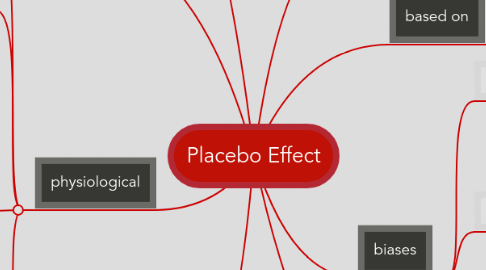
1. conditioning
1.1. subjects associate a treatment ritual with feeling better
1.1.1. improved mood
1.1.1.1. reduces percep- tion of pain
1.1.2. expectation
1.1.2.1. may cause release of
1.1.2.1.1. natural endorphins
1.1.2.1.2. dopamine in the reward centers of the brain
2. Hawthorne effect
3. trial effects
3.1. subjects more likely to:
3.1.1. comply with treatment
3.1.2. get regular medical attention
3.1.3. take better care of themselves
4. physiological
4.1. the ritual of treatment
4.2. if treatment involves
4.2.1. relaxation
4.2.2. a break from hectic daily routine
4.3. Believing one is being treated may reduce
4.3.1. anxiety about the illness
4.3.2. symptoms
4.3.3. sympathetic activity
4.3.4. blood pressure
4.3.5. strain on the heart
4.3.6. levels of stress hormones
4.4. Hands-on treatments
4.4.1. benefit of human contact
4.4.2. improves mood
4.4.3. provides an overall feeling of well-being
5. defined
6. illusions of observation
6.1. regression to the mean
6.2. self-limiting conditions
6.2.1. get better in time
7. biases
7.1. of observers
7.1.1. researchers
7.1.1.1. want interventions to work
7.1.1.1.1. assessments may be biased to be positive
7.2. of subjects
7.2.1. who usually want
7.2.1.1. to receive an effective treatment
7.2.1.2. to justify
7.2.1.2.1. expense/time
7.2.1.2.2. their risk
7.2.1.3. to meet the expectations of the researcher
7.3. countered by
7.3.1. double-blind trials
7.3.2. who took what?
7.3.2.1. not known
7.3.2.1.1. to subjects
7.3.2.1.2. to observers
8. based on
8.1. The Poor, Misunderstood Placebo
8.2. by Steven Novella
8.3. Skeptical Inquirer
8.3.1. Volume 34.6, Nov/Dec 2010
